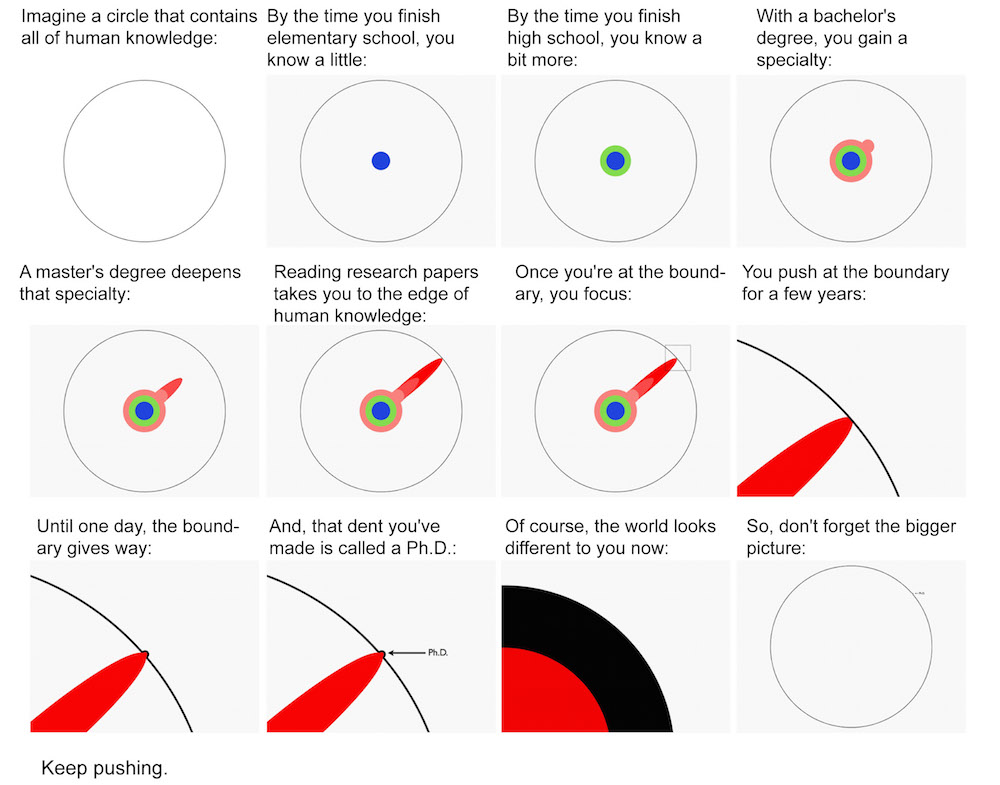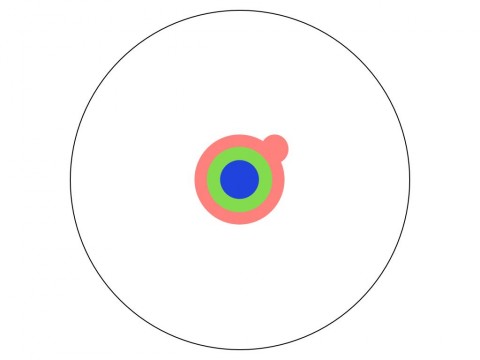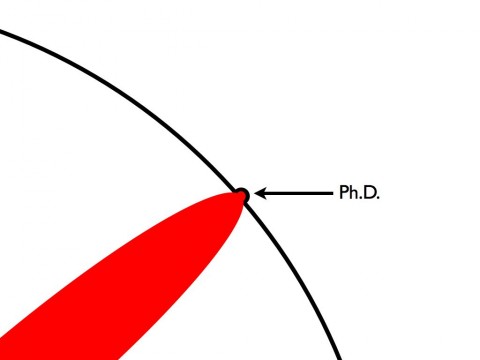[Most Recent Entries] [Calendar View]
Tuesday, June 20th, 2017
| Time | Event |
| 8:00a | When Jazz Legend Ornette Coleman Joined the Grateful Dead Onstage for Some Epic Improvisational Jams: Hear a 1993 Recording The influence of modern jazz on classic rock extends far beyond too-cool poses and too many drugs. In the 1960s, writes Jeff Fitzgerald at All About Jazz, “a few players were venturing beyond the sacred three-chord trinity and developing some serious chops.” John Coltrane’s “extended improvisations on his unlikely top-forty hit version of ‘My Favorite Things’” gets credit for inspiring “not only long-form rock hits like The Doors’ seven-minute ‘Light My Fire’ and CCR’s eleven-minute “I Heard It Through the Grapevine,’ but later jam bands from the Grateful Dead to Phish.” But of course, the “breakthrough moment for Rock-Jazz relations” arrived when Miles Davis “developed a Jazz/Rock hybrid called Fusion.” Davis’ Bitches Brew had much crossover appeal, especially to one of those aforementioned jam bands, the Dead, who—a month after the album’s release—invited Davis and his electric band to open for them at the Fillmore West. (Read about, and listen to, that unique event here.) The pairing made sense not only because Davis’ long-form grooves hit many of the same psychedelic musical receptors as the Dead’s extended free-form sessions, but also because Jerry Garcia was something of a jazz-head. Especially when it came to free jazz pioneer and inventor of “Harmolodics,” Ornette Coleman. “The guitarist had been a long time devotee” of Coleman, writes Ben Djarum at Ultimate Classic Rock, and contributed his distinctive playing to three tracks on Coleman’s 1988 album Virgin Beauty (hear them together on “Desert Players” above). Garcia’s devotion marks him as a true rock connoisseur of avant-garde jazz. (Perhaps the only other Coleman fans in the rock world as indebted to his influence are the also-legendarily-drug-fueled indie experimentalists Royal Trux.) It turns out the appreciation was mutual. “Coleman himself was aware of musical similarities between the Dead and his own group, Prime Time,” which also had two drummers. "Each emphasizes both melody and look-Ma-no-limits improvisation," wrote David Fricke in a 1989 Rolling Stone article about “jazz’s eternal iconoclast finding a new audience” through his association with Garcia and company. Upon witnessing the Dead play Madison Square Garden in 1987, and awed by the fans’ ultimate dedication, Coleman found himself thinking, “’Well, we could be friends here.’ Because if these people here could be into this, they could dig what we’re doing.” It would take six years more years, but Coleman finally played with the Dead in 1993 at their annual Mardi Gras celebration at the Oakland Coliseum. Where the Davis/Dead match-up 26 years earlier had been a diptych, showcasing the strengths of each artist by contrast with the other, the Coleman/Dead pairing was a true collaboration. Not only did Coleman’s Prime Time open the show, but the saxophonist joined the Dead onstage during their second set—in the midst of an open jam called “Space” (see in playlist below). His horn became a prominently integrated feature of what one fan remembered as “singularly the most intense thing I ever witnessed.” Such exaggeration from Deadheads seems routine, and sadly we have no video, nor could it ever replicate the experience. But some pretty spectacular live recordings of the entire Dead set may bear out the extremely high praise. “The Other One,” at the top of the post, first stretches out into very Coleman-like territory, and the band keeps up beautifully. After the verse kicks in halfway through, the song soon erupts into “walls of sound, screams, meltdowns, explosions….”
“The Other One,” was “a wise choice,” writes Oliver Trager in his The American Book of the Dead, “as its rhythm-based power allowed Coleman to continue his broad brush strokes.” After a “languorous” rendition of “Stella Blue,” the penultimate tune, “Turn on Your Love Light,” above, “provided Coleman with the perfect show-ending raveup to let loose in the fashion of an oldtime, down-home Texas horn honker.” In an interview later that same year, Garcia called Coleman “a wonderful model for a guy who’s done what we did, in the sense of creating his own reality of what music is and how you survive within it. He’s a high-integrity kind of person and just a wonderful man.” As for the night itself, Garcia remarked:
Coleman should be remembered as one of the most refined examples of such a musician for his championing what he called “Harmolodic Democracy.” You can hear the full Grateful Dead set from that February, 1993 Mardi Gras concert at Archive.org. The night went so well, notes Trager, that “the musicians repeated the formula with similar results in December 1993 running through an early identical song list at the Sports Arena in Los Angeles.” One can only imagine the audience was equally mesmerized. Related Content: The Night When Miles Davis Opened for the Grateful Dead in 1970: Hear the Complete Recordings Hear Ornette Coleman Collaborate with Lou Reed, Which Lou Called “One of My Greatest Moments” Josh Jones is a writer and musician based in Durham, NC. Follow him at @jdmagness When Jazz Legend Ornette Coleman Joined the Grateful Dead Onstage for Some Epic Improvisational Jams: Hear a 1993 Recording is a post from: Open Culture. Follow us on Facebook, Twitter, and Google Plus, or get our Daily Email. And don't miss our big collections of Free Online Courses, Free Online Movies, Free eBooks, Free Audio Books, Free Foreign Language Lessons, and MOOCs. |
| 11:00a | The 10 Most Depressing Radiohead Songs According to Data Science: Hear the Songs That Ranked Highest in a Researcher’s “Gloom Index” One of my favorite music-themed comedy sketches of recent years features a support group of Radiohead fans flummoxed and disappointed by the band’s post-Ok Computer output. The scenario trades on the perplexity that met Radiohead's abrupt change of musical direction with the revolutionary Kid A as well as on the fact that Radiohead fans tend toward, well… if not PTSD or severe mood disorders, at least a heightened propensity for generalized depression. “Much of Radiohead’s music is undeniably sad,” writes Analytics Specialist and Radiohead fan Charlie Thompson. Rather than play something “less depressing,” however, as many an acquaintance has asked him over the years, Thompson decided “to quantify that sadness, concluding in a data-driven determination of their most depressing song.” Now, purely subjectively, I’d place “How to Disappear Completely” in the top spot, followed closely by Amnesia’s “Pyramid Song.” But my own associations with these songs are personal and perhaps somewhat arbitrary. I might make a case for them based on lyrical interpretations, musical arrangement, and instrumentation. But the argument would still largely depend on matters of taste and acculturation.
Thompson, on the other hand, believes in “quantifying sentiment.” To that end, he created a “gloom index,” which he used to measure each song in the band’s catalog. Rather than listening to them all, one after another, he relied on data from two online services, first pulling “detailed audio statistics” from Spotify’s Web API. One metric in particular, called “valence,” measures a song’s “positivity.” These scores provide an index “of how sad a song sounds from a musical perspective.” (It’s not entirely clear what the criteria are for these scores).
Next, Thompson used the Genius Lyrics API to examine “lyrical density,” specifically the concentration of “sad words” in any given song. To combine these two measures, he leaned on an analysis by a fellow data scientist and blogger, Myles Harrison. You can see his resulting formula for the “Gloom Index” above, and if you understand the programing language R, you can see examples of his analysis at his blog, RCharlie. (Read a less data-laden summary of Thompson’s study at the analytics blog Revolutions.) Thompson also plotted sadness by album, in the interactive graph further up. So, which song rated highest on the “Gloom Scale”? Well, it’s “True Love Waits” from their most recent album A Moon Shaped Pool (hear a live acoustic version up above.). It’s a damned sad song, I’ll grant, as are the nine runners-up, all of which you can hear in the YouTube and Spotify playlists above). “Pyramid Song” appears at number 5, but “How to Disappear Completely” doesn’t even rank in the top ten. From a purely subjective standpoint, this makes me suspicious of the whole operation. But you tell us, readers, what do you think of Thompson's experiment in “quantifying sentiment” in music? Here's the top 10: 1. True Love Waits via Kottke Related Content: Radiohead’s “Creep” Played on the Gayageum, a Korean Instrument Dating Back to the 6th Century A Free Course on Machine Learning & Data Science from Caltech Josh Jones is a writer and musician based in Durham, NC. Follow him at @jdmagness The 10 Most Depressing Radiohead Songs According to Data Science: Hear the Songs That Ranked Highest in a Researcher’s “Gloom Index” is a post from: Open Culture. Follow us on Facebook, Twitter, and Google Plus, or get our Daily Email. And don't miss our big collections of Free Online Courses, Free Online Movies, Free eBooks, Free Audio Books, Free Foreign Language Lessons, and MOOCs. |
| 2:27p | A Crash Course on Soviet Montage, the Russian Approach to Filmmaking That Revolutionized Cinema It would have scandalized many an American filmgoer of the mid-twentieth century to learn that the movies they watched — even the most wholesome Hollywood fare of the era — made extensive use of a Soviet invention. What's more, that invention came out of the very revolution that put the Communists in power, after which the Soviet government "took a strong interest in film, because it recognized cinema for what it was — a powerful tool for social and political influence." So says Craig Benzine, host of Crash Course Film History, in the series' eighth self-contained episode, "Soviet Montage," which tells the story of that cinema-changing editing technique. The government understood, in other words, the power of cinema as propaganda, and swiftly centralized the film industry. But after the Russian Revolution, which put an end to the importation of film stock, Russian filmmakers couldn't shoot a frame. So while the nation built up the industrial capacity to produce film stock domestically, these filmmakers — much like the video essayists on the internet today — studied existing films, breaking them down, reassembling them, and figuring out how they worked. In this way, filmmaker Lev Kuleshov defined the "Kuleshov effect," explained by Benzine as the phenomenon whereby "viewers draw more meaning from two shots cut together than either shot on its own," and different combinations of shots produce vastly different intellectual and emotional effects in those viewers. When they finally got some film stock, Soviet montage filmmakers, who had come to believe that "for film to reach its true potential, the cuts themselves should be visible, the audience should be aware of them, the illusion should be obviously constructed and not hidden," got to work making movies that demonstrated their ideas. They saw themselves as engineers, "joining shots the way a bricklayer builds a wall or a factory worker assembles a vehicle,"and Benzine examines sequences from two of the best-known fruits of these labors, Sergei Eisenstein's Battleship Potemkin and Dziga Vertov's A Man with a Movie Camera (both of which you can watch free online by following those links). Benzine also looks to more recent examples of Soviet montage theory in practice in everything from Dumbledore's death in the Harry Potter movies to the shower scene in Psycho (a film by an avowed fan of the Kuleshov effect) to the final standoff in The Good, the Bad and the Ugly. For more on the mechanics of Soviet montage, have a look at the fifteen-minute explainer from Filmmaker IQ above — or pay close attention to most any movie or television show or music video made over the past eighty years. The ideological climate that gave rise to Soviet montage theory may have changed, but the artistic principles its filmmakers discovered will, for the foreseeable future, hold true, underscoring the reliable effectiveness and surprising power of the simple cut. Related Content: A Visual Introduction to Soviet Montage Theory: A Revolution in Filmmaking Hitchcock on the Filmmaker’s Essential Tool: The Kuleshov Effect Watch Battleship Potemkin and Other Free Sergei Eisenstein Films Free: Dziga Vertov’s A Man with a Movie Camera, the 8th Best Film Ever Made Based in Seoul, Colin Marshall writes and broadcasts on cities and culture. He’s at work on the book The Stateless City: a Walk through 21st-Century Los Angeles, the video series The City in Cinema, the crowdfunded journalism project Where Is the City of the Future?, and the Los Angeles Review of Books’ Korea Blog. Follow him on Twitter at @colinmarshall or on Facebook. A Crash Course on Soviet Montage, the Russian Approach to Filmmaking That Revolutionized Cinema is a post from: Open Culture. Follow us on Facebook, Twitter, and Google Plus, or get our Daily Email. And don't miss our big collections of Free Online Courses, Free Online Movies, Free eBooks, Free Audio Books, Free Foreign Language Lessons, and MOOCs. |
| 5:33p | The Illustrated Guide to a PhD: 12 Simple Pictures That Will Put the Daunting Degree into Perspective
Matthew Might, a computer science professor at the University of Utah, writes: "Every fall, I explain to a fresh batch of Ph.D. students what a Ph.D. is. It's hard to describe it in words. So, I use pictures." In his Illustrated Guide to the PhD, Professor Might creates a visual narrative that puts the daunting degree into perspective. Anyone who has already pursued a Ph.D. will see the wisdom in it. (Or at least I did.) And young, aspiring academics would be wise to pay it heed. You can see a condensed version of the the illustrated guide above. Or follow it in a larger format below. Imagine a circle that contains all of human knowledge: By the time you finish elementary school, you know a little: By the time you finish high school, you know a bit more: With a bachelor's degree, you gain a specialty: A master's degree deepens that specialty: Reading research papers takes you to the edge of human knowledge: Once you're at the boundary, you focus: You push at the boundary for a few years: Until one day, the boundary gives way: And, that dent you've made is called a Ph.D.: Of course, the world looks different to you now: So, don't forget the bigger picture: Keep pushing. You can find Matt's Illustrated Guide hosted on his web site. This guide/reality check is published under a Creative Commons License. You can also buy a print version for $6.50. The money goes to charity. This guide first appeared on our site in 2012. But, with all of the wisdom it packs into a small space, it seemed worth bringing back. The Illustrated Guide to a PhD: 12 Simple Pictures That Will Put the Daunting Degree into Perspective is a post from: Open Culture. Follow us on Facebook, Twitter, and Google Plus, or get our Daily Email. And don't miss our big collections of Free Online Courses, Free Online Movies, Free eBooks, Free Audio Books, Free Foreign Language Lessons, and MOOCs. |
| << Previous Day |
2017/06/20 [Calendar] |
Next Day >> |


















